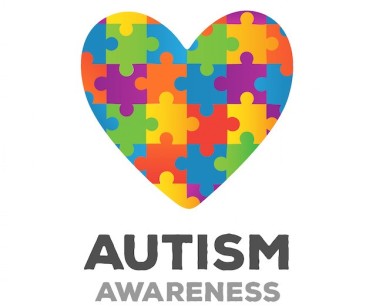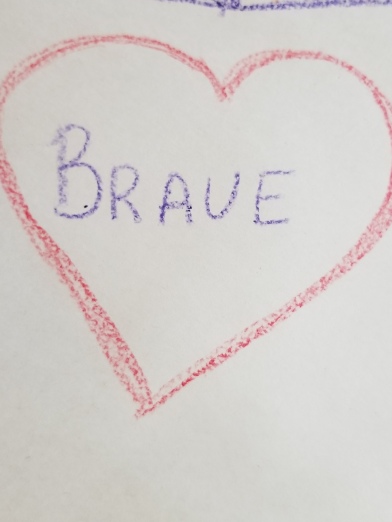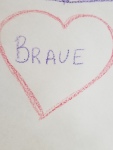(Please see my previous blogposts from December 17, 2017, and January 2, 2018 about chatting with your child or children about issues related to social justice).
 Monday, April 2nd 2018, is World Autism Awareness Day. It just so happens that we have a few parents in our lives that have children living on the autism spectrum. Therefore, in honor of my nephew, my friends’ children, and all parents and children living with Autism, here is a 3-5 minute lesson on talking to your child about disabilities. For Victorine, Hayley, and Elspeth (who keeps me honest and in check).
Monday, April 2nd 2018, is World Autism Awareness Day. It just so happens that we have a few parents in our lives that have children living on the autism spectrum. Therefore, in honor of my nephew, my friends’ children, and all parents and children living with Autism, here is a 3-5 minute lesson on talking to your child about disabilities. For Victorine, Hayley, and Elspeth (who keeps me honest and in check).
Children can sometimes be cruel to one another. No matter how diverse our world is, children still are socialized to believe that there is only one way to be. Despite the medical and psychological research, out there some parents and children still hold a certain norm in their minds about an individual’s emotional, cognitive, and physical development. It is sad. It is inappropriate. Those beliefs about such norms are counterproductive to us living in a culturally competent diverse society. Not only that but such beliefs do not allow our children to experience people who are different than them.
I noticed that there is not much written for people who have friends or relatives with disabilities. There is a growing set of research and resource banks for parents with children who have disabilities, but not much for those of us who want to be supportive, inclusive, competent, and allies.
I am still learning. I ask a lot of questions. I make mistakes. I look up a lot of stuff. I ask my friends for assistance. You should too! The conversation about children who do not have the same physical, emotional, or cognitive abilities as my child has come up when we plan playdates, birthday parties, or are getting ready to go to any outing where other children may be present. As we are getting dressed, my part of the conversation goes something like this:
“Are you excited about the party/play date/museum/field trip today?”
“I know I loved parties/play dates/museums/field trips when I was your age.”
“I want you to please remember to be kind to all the other children present. You know how you like it when people are kind to you?”
“Can you also remember that there may be kids there who cannot run or do not run as fast as you do or who don’t like crowds or loud noises…can you think of something to make them more comfortable/feel included?”
Our son is o.k. about coming up with things like “help them on the ladder to the slide,” or “sit with them for a while if they want to sit.” However, he also needs some prompting. I add some suggestions to help him think about children who may be in a wheelchair or who may not be able to play the running or climbing games. We talk about not forcing kids to engage if they do not want to: “Ask your friend if they are o.k….tell them it is o.k. to sit down for a while if they want to…ask them if they want to do something else.”
Teaching a 7 y.o. to be observant of their friend’s feelings and movements is a challenge, but the more I do it the more I find he is slowly paying attention. He is still uncomfortable sometimes around children with disabilities, but much more comfortable than he was a year or two ago. Exposure. Conversation. Normalization.
We also talk about people who look different (maybe a child with Down syndrome or Fetal Alcohol Syndrome). Recently, we began talking about disabilities you cannot see (ADD for examkple). I ask him what questions he has. I encourage him to ask me more questions as they come up. I have been known to go with my child to ask a parent of another child a question or two. After all, I do not know everything!
- As always, use age-level appropriate resources and language.
- Normalize the fact that ALL children (and adults) matter.
- Teach & Encourgae your child to be observant and respond appropriately.
- Encourage your child not to stare.
- Encourage them to ask questions.
- Begin to teach them person-first language (“My friend Nathan who is on the sutism spectrum/who lives with autism” vs “That autisitc kid”)
- If your child is uncomfortable around children with a disability, do not force your child to play with them. Talk time later to help your child hear you say how important it is to be inclusive.
What ideas and helpful tips do you have?
HELPFUL LINKS AND BOOKS
- Two great blogs I found:
- Autism Speaks https://www.autismspeaks.org/what-autism/world-autism-awareness-day
- HollyRod Foundation http://www.hollyrod.org/
Books
- My brother Charlie by Holly Robinson Peete
- I see things differently: A first look at autism by Pat Thomas
- A friend like Simon by Kate Gaynot
- Since we’re friends: An autism picture book by Celeste Shally
- Don’t call me special: A first look at disability by Pat Thomas and Lesley Harker
- A rainbow of friends by P.K. Hallinan

 Parents and guardians should be brave and create space for conversations with their children about the important topics of our society. We can no longer live in silos nor can we live in silence.
Parents and guardians should be brave and create space for conversations with their children about the important topics of our society. We can no longer live in silos nor can we live in silence.